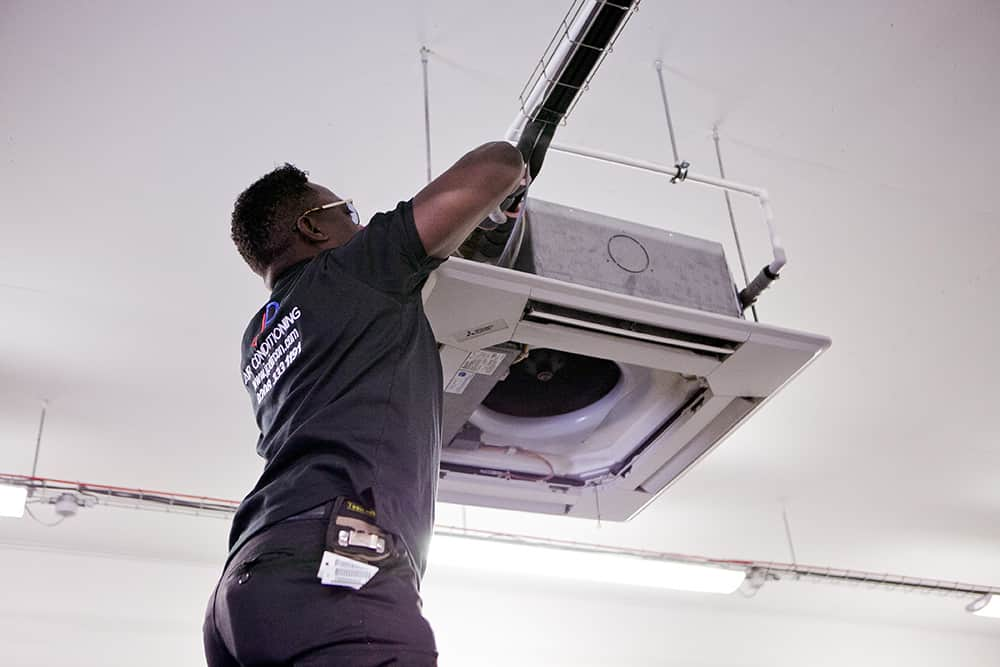Air conditioning technology helps us stay cool and comfortable during hot weather. Whether it’s in our homes, offices, or vehicles, air conditioning systems play a vital role in regulating indoor temperature.
In this blog, we’ll provide a simple explanation of how air conditioning works, focusing on the most common type of system: the vapour compression cycle.
The basic principles
Air conditioning works by removing heat from the indoor air and transferring it outside, creating a cooler environment indoors. This process is based on the principles of heat transfer, refrigeration, and the phase change of refrigerants.
Before we start, its useful to know that the “refrigerant” is simply a special chemical substance with properties that allow it to change states (from gas to liquid and vice versa) at relatively low temperatures. This characteristic enables efficient heat transfer within the air conditioning system.
The condenser and evaporator also play crucial roles in this process. The condenser releases heat from the refrigerant to the outdoor air, while the evaporator absorbs heat from the indoor air.
Components of an air conditioning system
-
Compressor
This is the heart of the air conditioning system. The compressor pressurises the refrigerant gas, increasing its temperature and energy level.
-
Condenser
The hot, high-pressure refrigerant gas is then sent to the condenser. The condenser is usually located outside of the building or vehicle and consists of metal fins and tubes. As the hot gas flows through the condenser, it releases heat to the surrounding air, causing the gas to condense into a high-pressure liquid.
The condenser and evaporator play crucial roles. The condenser releases heat from the refrigerant to the outdoor air, while the evaporator absorbs heat from the indoor air.
-
Expansion valve
After leaving the condenser, the high-pressure liquid refrigerant passes through an expansion valve. The expansion valve reduces the pressure of the refrigerant, causing it to become a low-pressure, cool liquid.
-
Evaporator
The cool liquid refrigerant then enters the evaporator, which is usually located indoors. The evaporator consists of metal fins and tubes and works in the opposite way of the condenser. As warm indoor air is blown over the evaporator’s coils, the refrigerant inside the tubes absorbs the heat from the air, cooling it down. The refrigerant evaporates in the process, turning into a low-pressure gas.
-
Blower
The blower, typically a fan, blows air over the cooled evaporator coils and circulates it throughout the room or vehicle, lowering the indoor temperature.
-
The cycle
The vapour compression cycle continues as the low-pressure gas from the evaporator returns to the compressor, and the process starts all over again. This continuous cycle removes heat from the indoor air, creating a comfortable and cool environment.
A thermostat acts as a control device, monitoring the indoor temperature and signalling the system to activate or deactivate accordingly. It helps maintain a desired temperature by regulating the operation of the compressor and blower.
In summary, air conditioning systems work by using a vapor compression cycle to remove heat from indoor air and transfer it outside. All you really need to know is that these systems keep us cool and comfortable, especially during hot weather, and we can supply them. Give us a call at JP Air Conditioning on 02083331191.



